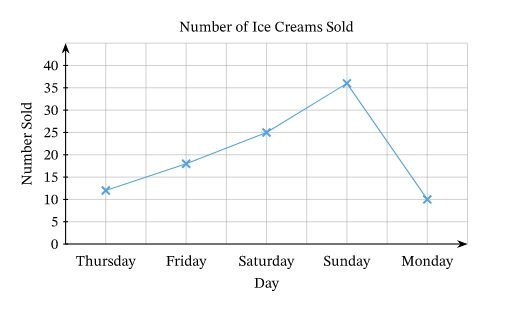In the ever-changing world of B2B, effective prospecting is the cornerstone of success. However, navigating the complexities of lead generation and lead qualification can be an arduous process, fraught with potential pitfalls. Fortunately, by identifying and correcting common mistakes, you can optimize your prospecting efforts and achieve remarkable results.
Let’s take a look at the 10 fatal mistakes to avoid in B2B prospecting and discover the solutions to correct them effectively:
Error 1: Lack of targeting
Problem: Targeting too broad and undifferentiated an audience is a common mistake that dilutes your efforts and reduces your chances of success.

Solution: Clearly define your ideal customer persona, identifying demographics, specific needs and pain points. Use segmentation and targeting tools to identify and approach the most relevant prospects.
Error 2: Non-personalized approach
Problem: Generic, impersonal messages often fall on deaf ears. B2B prospects are looking for a human connection and an understanding of their unique needs.
Solution: Personalize each message with specific information about the prospect, such as name, company and professional challenges. Adapt your tone and language to the context and the prospect’s profile.
Error 3: Messages too generic
Problem: Generic messages devoid of added value fail to attract interest. B2B prospects are looking for valuable information and concrete solutions to their problems.

Solution: Create powerful messages that highlight the unique benefits of your offer and demonstrate how your product or service can solve the prospect’s specific problems. Use concrete examples and case studies to illustrate your point.
Error 4: No Follow-up
Problem: Leaving prospects unattended is a missed opportunity. B2B prospects may need several points of contact before making a purchasing decision.
Solution: Set up an effective follow-up system to follow up with interested prospects and keep them engaged. Send personalized follow-up emails, phone calls or messages on LinkedIn to nurture the relationship and move forward in the sales process.
Error 5: Inability to handle objections
Problem: Objections are an integral part of the sales process. Not knowing how to manage them effectively can slow down your progress.

Solution: Anticipate common objections and prepare clear, convincing answers. Listen carefully to the prospect’s objections and rephrase them to demonstrate your understanding. Offer concrete solutions tailored to the prospect’s specific needs.
Error 6: Exclusive focus on features
Problem: B2B prospects don’t just care about features; they’re looking for the added value and tangible benefits your offering can bring them.
Solution: Focus on the tangible advantages and benefits your product or service can bring to the prospect. Explain how your solution can improve their efficiency, optimize their processes and generate tangible business results.
Error 7: No Questions
Problem: Ask relevant questions to better understand the prospect’s needs and challenges. Don’t settle for a monologue; engage in an interactive conversation.

Solution: Prepare a list of open-ended questions that allow prospects to express themselves and share their perspectives. Listen carefully to his answers and ask follow-up questions to deepen your understanding.
Error 8: Inattention to prospects
Problem: Not giving the prospect your full attention during interactions can damage the relationship and build trust.

Solution: Be present and engaged in conversations with prospects. Avoid distractions and give your full attention to their needs and questions. Demonstrating your genuine interest and expertise will strengthen the relationship and increase your chances of success.
Error 9: No results follow-up
Problem: Not tracking your prospecting results prevents you from identifying the strengths and weaknesses of your approach.

Solution: Set up a performance tracking system to measure the effectiveness of your prospecting efforts. Analyze the data collected to identify the best-performing channels, the most effective message types and recurring errors. Use this information to optimize your approach and improve your results over time.
Error 10: Lack of perseverance
Problem: B2B prospecting is an ongoing process that requires time, effort and perseverance. Don’t be discouraged by initial failures; keep learning and improving.

Solution: Adopt a long-term vision and stay motivated. Don’t give up after a few failures; keep refining your approach and persevering. Perseverance and continuous learning are the keys to success in B2B prospecting.
In addition to avoiding these fatal mistakes, here are a few additional tips to optimize your B2B prospecting:
- Use the right tools and technologies: Many tools and technologies can help you automate tasks, segment your prospects and track your results.
- Stay up to date on market trends: Understand your prospects’ current challenges and needs so you can offer them relevant solutions.
- Build authentic relationships: Trust and credibility are essential for building lasting relationships with prospects.
- Offer added value: Don’t just sell a product or service; offer concrete solutions to your prospects’ problems.
- Be patient and persistent: B2B prospecting is an ongoing process that takes time and effort.
By following these tips and avoiding the fatal mistakes presented in this article, you can significantly improve your B2B prospecting results and generate more qualified leads.
Remember that B2B prospecting is a continuous learning process. Stay open to new ideas, adapt your approach according to the results, and never give up!
FAQ
B2B prospecting is the process of finding and qualifying potential new customers for a company.
You can target your B2B prospects using different criteria, such as company size, sector of activity, job title, etc. You can also use marketing automation tools to help you identify the most relevant prospects.
You can personalize your B2B prospecting approach by taking the time to get to know your prospects. You can also use their name and company in your communications.
It’s important to understand your prospects’ objections and propose solutions. You also need to be able to remain calm and professional.
You can set up a tracking system to monitor your results. This will help you identify what works and what doesn’t, and improve your results over time.
Conclusion
By avoiding the fatal errors presented in this article and following the advice given, you can transform your B2B prospecting into an efficient process that generates qualified leads. Remember that perseverance, continuous learning and adaptation are the keys to success in this field.
To find out more :
Leadin
A B2B prospecting service that can help you generate qualified leads.
To complement this article, I invite you to consult the following resources:
- White paper: 5 key steps to successful B2B prospecting: https: //darkseagreen-finch-754851.hostingersite.com/gagnez-de-nouveaux-clients-grace-a-la-prospection-b2b-de-leadin/
- Infographic: 10 key performance indicators (KPIs) to track in B2B prospecting: https: //www.linkedin.com/pulse/kpis-recommended-b2b-companies-focused-lead-anastasia-balova
- Webinar: How to generate qualified leads through B2B prospecting: https: //darkseagreen-finch-754851.hostingersite.com/generation-leads-b2b-qualifies/
I hope you’ll find these resources useful in improving your B2B prospecting results!

